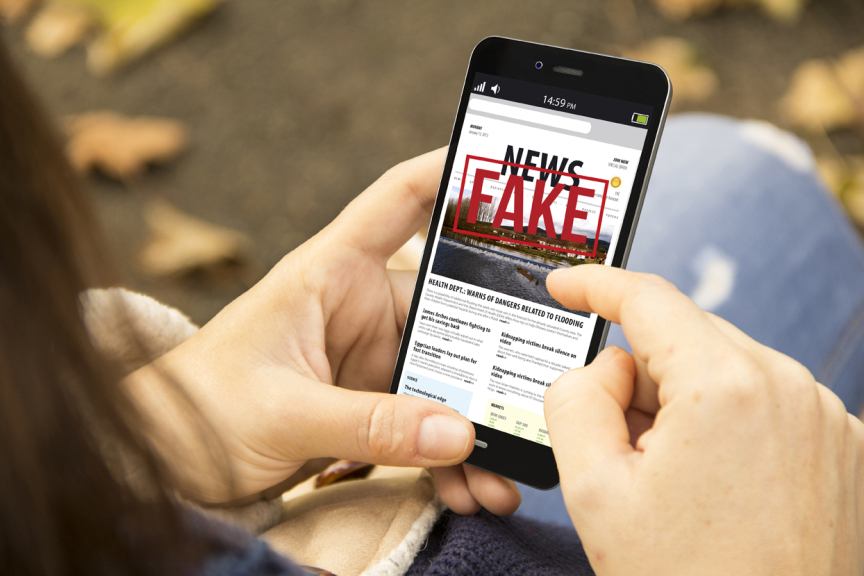How to Fight Fake News
As election season gets underway, Rutgers librarians give tips for finding credible information

In the era of disinformation campaigns, deepfakes and clickbait, being able to identify quality information has become an essential part of being a responsible citizen.
As election season kicks into full gear this week with the Iowa caucuses, we spoke with three Rutgers librarians to better understand fake news as a phenomenon, and what we can do to stop it from spreading.
What do librarians mean when they talk with students about fake news?
Katie Elson Anderson: When I teach, I define “fake news” as disinformation, misinformation and propaganda. It is important to distinguish between information that is intentionally wrong, satirical or not entirely factual, and information that is factual but is being described as “fake” in order to dissuade people from believing it.
What is unique about the digital media environment that allows fake news to spread so widely?
Leslin Charles: I would focus on four main areas. First, there is the blurring of satire and real news. Second, bots can mislead users to give credibility to a story because many people are talking about it. Third, algorithms filter news based on a user’s profile and online activity. It is like a Netflix queue – it gives you what it thinks you’ll like. Fourth, there is the clickbait economy. For example, Macedonia is a country that has a fake news industry with the United States as the main consumer of the information. People get up to go to work to write fake news for our consumption.
What responsibility do social media platforms like Facebook have in combating the spread of fake news? Are they currently doing enough?
Katie Elson Anderson: While many platforms claim that they are doing their best, their actions do not support their statements. Both AI and human moderators have their challenges, and there are numerous examples of good information being taken down and bad information continuing to spread. The decisions being made – such as Facebook’s decision to use a questionable source in their fact-checking – prove to me that they are less interested in stopping the flow of bad information than they are in their profit and corporate relationships.
What are some strategies for identifying fake news?
Roberta Tipton: One good strategy is to actually use diverse and reliable alternatives for obtaining your news. Everything online looks the same – a well-designed fake site looks as good as a legitimate news site. The key to detecting a false narrative is to look in legitimate places for verification.
Katie Elson Anderson: An excellent strategy is to ask questions and take the time to answer them. Some of these are easy to answer, such as the date of the article or whether the author has written about this topic in other places. Other questions are harder to answer and include knowing about the source, tracking how the information has moved through different media platforms, verifying images and understanding any biases.
What tools are available to help us identify fake news or build skills to find credible information?
Katie Elson Anderson: Sites such as Snopes.com, Leadstories.com, Politifact.com and Factcheck.org can be used to double-check the accuracy of a specific story. Sites like Allsides.com and mediabiasfactcheck.com can be useful in seeing and understanding the biases in reporting, which is an important strategy for identifying how facts and nonfacts are presented.
What can we do as individuals to prevent the spread of fake news?
Leslin Charles: Stop to think if it is too sensational, rather than impulsively forwarding information. Remember that a false story is more likely to go viral than a true one.
Roberta Tipton: Be aware that by reading or listening only to online media that you have selected, you are narrowing your perspective and making yourself more vulnerable to false narratives. Try to read or listen a bit more widely.
Katie Elson Anderson: When we identify it, we should take the opportunity to educate others. It is not enough to just not spread it ourselves – we must take the extra steps to help others identify it and empower everyone to speak up when they see it.
Why is it important to be aware of fake news and how it is used, especially in an election year?
Roberta Tipton: Regimes around the world would like to see a divided and unsuccessful United States for their own reasons – political and economic. Fake news is a focused strategy for destabilizing the American electorate.
Leslin Charles: We all want to be in control of our decisions. We should be careful of finding accurate information on our own without being controlled or manipulated by bots, other people's social media networks or our filter bubbles.
Katie Elson Anderson is a reference and instruction librarian at Rutgers–Camden who has published award-winning research on social media and fake news. Leslin Charles is an instructional design librarian at Rutgers–New Brunswick who teaches the “Truth or Fiction?” Byrne Seminar for first-year students. Roberta Tipton is a business librarian at Rutgers–Newark whose work includes developing online learning resources to help students identify fake news.